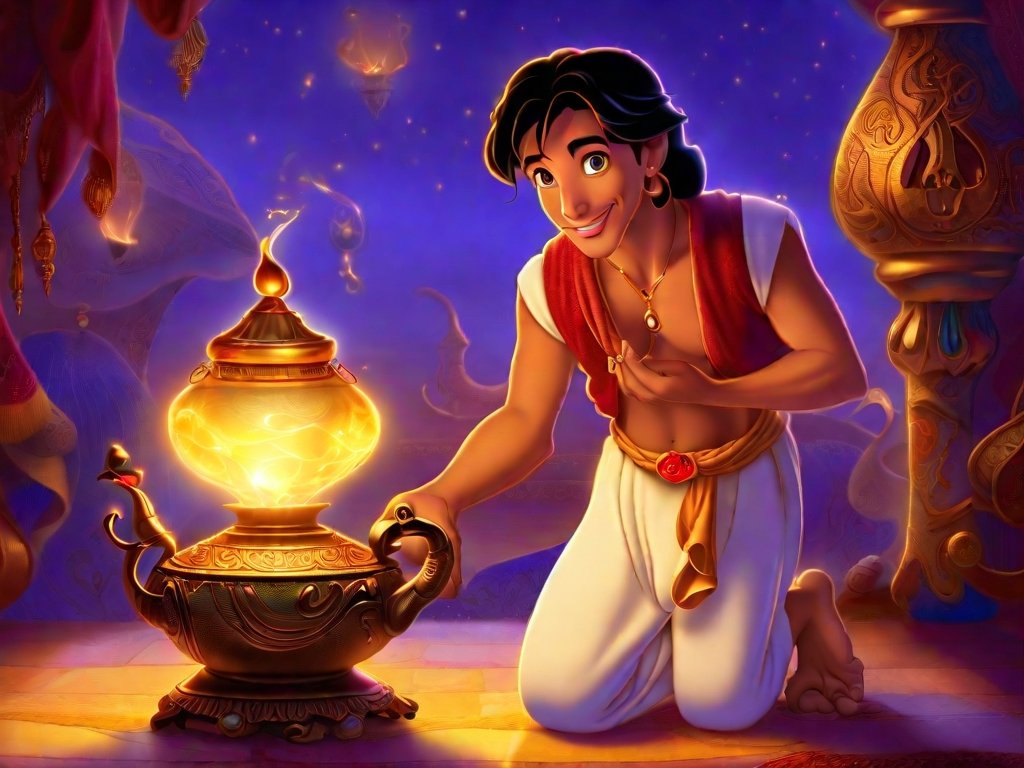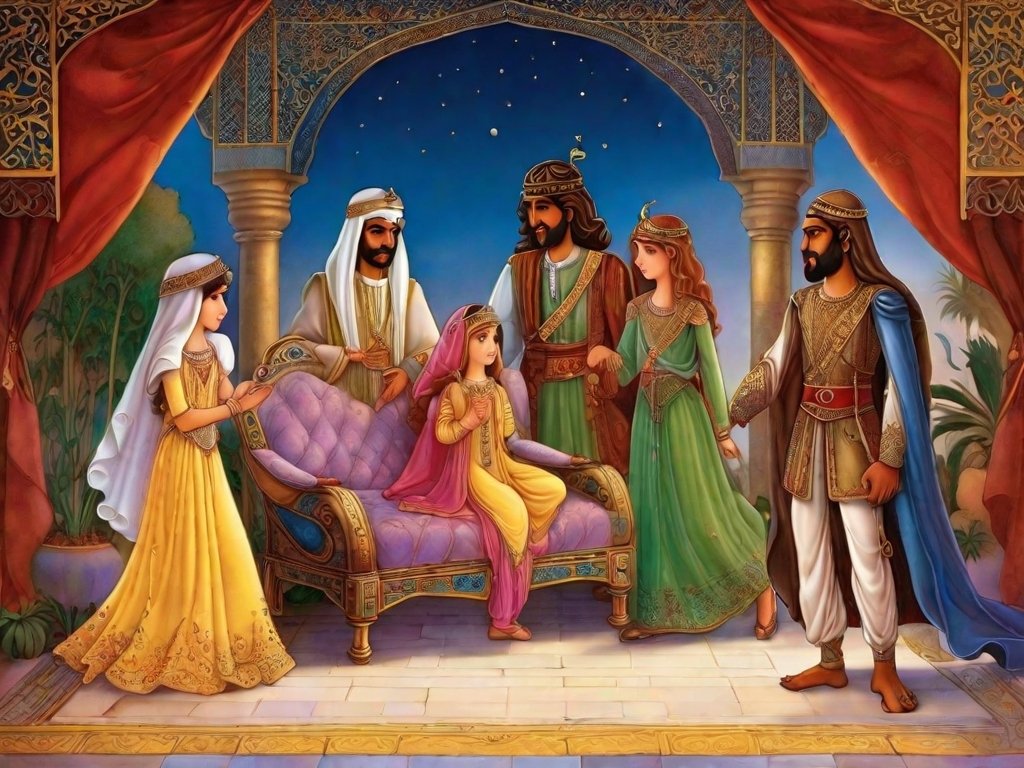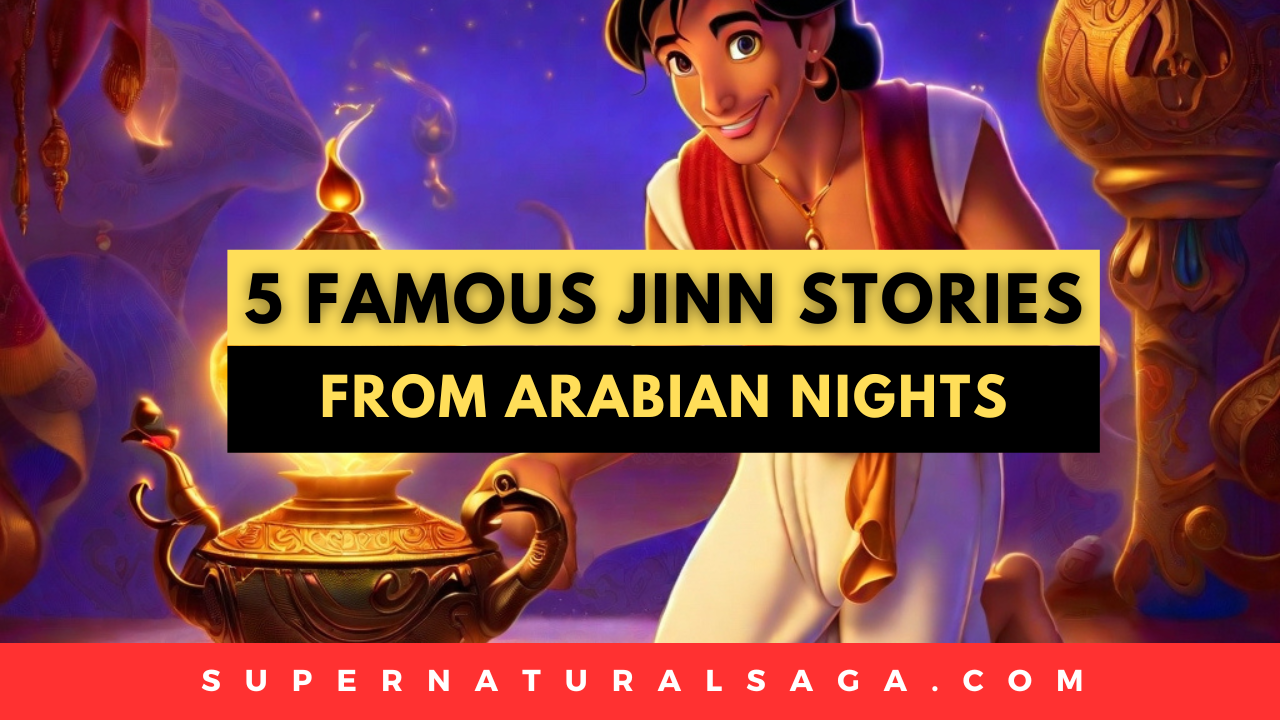The collection of Middle Eastern folk tales known as Arabian Nights or One Thousand and One Nights overflows with stories featuring jinn.
Jinn are supernatural creatures in Islamic theology and Arab folklore that exhibit free will and can be both good and evil. In these mediaeval short stories, jinn appear as magical beings interacting with humans, acting as guides, helpers, tricksters, or sources of power.
Several of the most prominent narratives focused on jinn are explored below to illustrate their significance in Arabian Nights.
Story 1: The Fisherman and the Jinni

One of the most famous jinn stories is “The Fisherman and the Jinni.” It tells of a poor fisherman who accidentally nets a jinni trapped for centuries inside a jar.
When freed, the jinni first threatens to kill the fisherman for his imprisonment. The clever fisherman convinces the jinni to first tell his backstory which features multiple layers of confinement by sorcerers and Ottoman nobles.
The long tale of woeful imprisonment stirs compassion in the fisherman who tricks the jinni back into the jar and throws it into the sea, escaping death.
This complex layered tale highlights how cunning humans can outsmart and control powerful jinn through persuasion and deceit. It became one of the most retold jinn stories.
Story 2: Aladdin and the Lamp

The rags-to-riches tale of “Aladdin and the Lamp” hinges on the discovery of a magical oil lamp containing a jinni bound to serve the owner.
When the poor youth Aladdin discovers the lamp, the mighty jinni appears and must obey his commands, granting riches, luxury, and eventually Aladdin’s marriage to a princess. But an evil magician also seeks the jinni’s power.
Though Aladdin wins in the end, this story emphasises the immense power commanded by whoever possesses an object with an enslaved jinni inside.
By making the jinni fulfil each wish, the lamp owner can rapidly ascend in wealth and status, underscoring the value placed on controlling jinn for human ends.
Story 3: Sindbad and the Valley of Diamonds

In his seventh voyage, the mythical sailor Sindbad the Sailor encounters a deep valley full of diamonds guarded by a frightening snake.
Sindbad realises the snake is actually an evil jinni in disguise when it briefly transforms into a bearded old man. Sindbad escapes with a bag of diamonds by throwing bloody meat to distract the jinni in snake form.
This episode demonstrates how jinn can use shape-shifting abilities to hide their true nature. It also shows jinn as guardians of untold treasures which humans risk their lives trying to seize through bravery and wit. Outsmarting the jinni allows Sindbad to become fabulously wealthy.
Story 4: The City of Brass

One tale tells of a band of travellers who endure a perilous desert journey to find the mythical City of Brass rumoured to be filled with riches.
They discover an abandoned city of palaces, preserved as if its jinn inhabitants simply vanished.
After some members plunder treasures, they rouse the city’s evil jinn who brutally murder the group as infidels trespassing holy ground.
This cautionary tale depicts forbidden ruins humans should avoid as the territory of unpredictable jinn who violently defend their realm.
It serves as a morality lesson warning of the deadly consequences of greed, curiosity and violating jinn sanctuaries.
Story 5: The Three Princes and Princess Nouronnihar

Two jealous princes use magic to transform Princess Nouronnihar and a prince into jinn so they can marry her father the sultan.
After the prince reluctantly marries Nouronnihar in jinn form, he leaves and tragically discovers she has died from a broken heart. The guilt-ridden prince then finds and punishes the evil jinn who aided the transformation.
This romance depicts powerful sorcerers harnessing the abilities of jinn for their schemes through dangerous magic. It shows jinn as not always evil in themselves, but able to be controlled by humans for wicked and tragic ends impacting innocent lives.
Conclusion
As these examples illustrate, jinn appear frequently throughout Arabian Nights in myriad roles ranging from genies trapped in objects to magical creatures guarding treasure to shape-shifters and tricksters interacting with humans. The stories of jinn emphasise how, through cleverness and sorcery, humans endeavour to control jinn’s powers for their benefit, whether materially or for dark revenge.
But they also warn that meddling with jinn through greed or hubris can incur deadly consequences. The complex recurring presence of jinn underscores their importance in mediaeval Middle Eastern worldviews as supernatural forces to be feared, avoided, manipulated or conquered. These layered Arabian Nights folk tales continue to influence modern depictions of jinn across global media today. Their timeless prevalence reveals the enduring enchantment and hazards supernatural beings like jinn represent within the human imagination.

